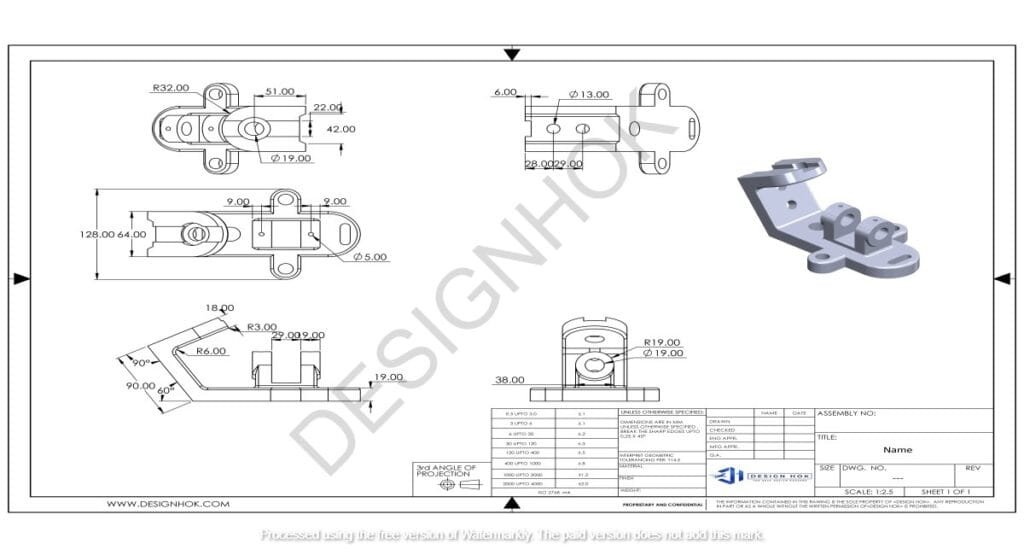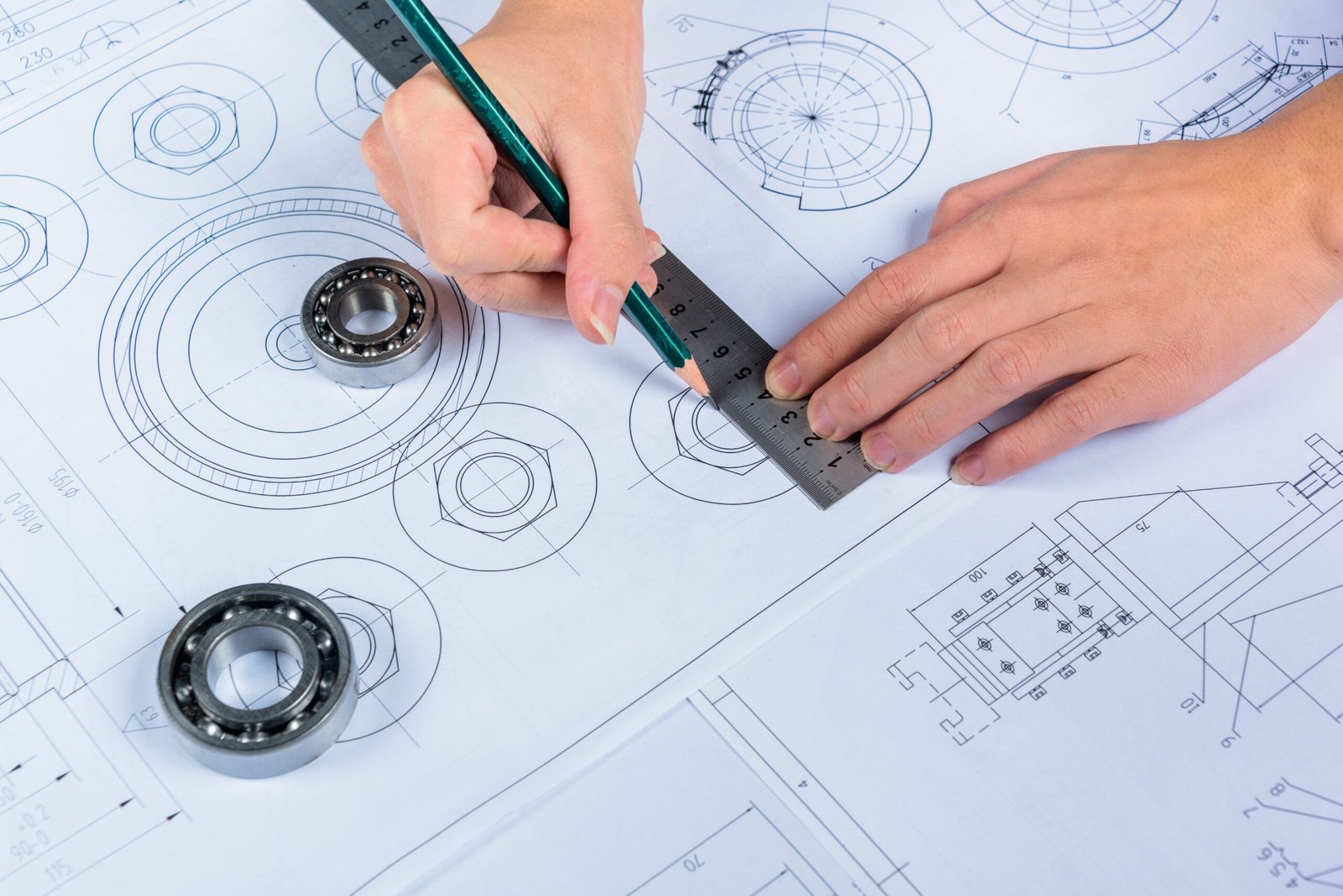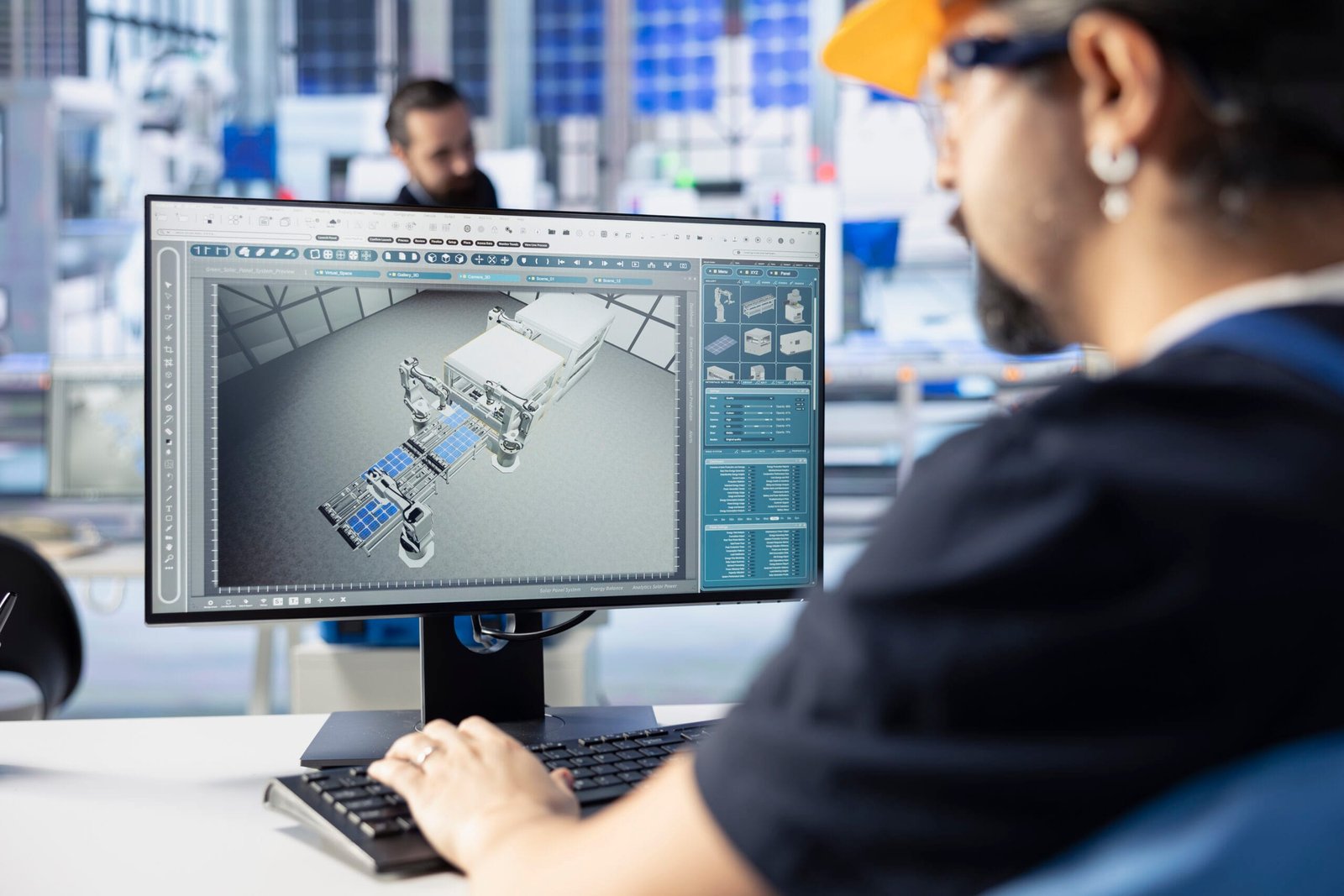Description:
Discover the top What Software Do Professionals Use for 3D Modeling. Learn how different tools serve various design industries—from architecture and engineering to product visualization and animation.
Introduction
In the ever-evolving world of design and engineering, What Software Do Professionals Use for 3D Modeling plays a critical role in bringing ideas to life. From designing intricate mechanical parts to visualizing entire buildings before construction begins, What Software Do Professionals Use for 3D Modeling is the backbone of modern-day digital creation. At DesignHok, we use the industry’s most powerful and precise tools to ensure every project we handle is executed with exceptional detail, creativity, and functionality.
Whether you’re an architect, product designer, engineer, or 3D artist, the right software can make a huge difference in terms of workflow, quality, and collaboration. In this blog, we’ll explore the top What Software Do Professionals Use for 3D Modeling, especially those that DesignHok relies on for delivering high-end design services.
Why Choosing the Right What Software Do Professionals Use for 3D Modeling Matters
What Software Do Professionals Use for 3D Modeling varies greatly in its features, capabilities, and target industries. The best software:
- Increases productivity and efficiency
- Enhances design accuracy
- Enables better visualization and collaboration
- Provides realistic rendering and simulation
- Supports industry-specific formats and standards
For companies like DesignHok, where precision and presentation are equally important, using the right mix of tools ensures that every client receives a product that is not only technically accurate but also visually stunning.
Top What Software Do Professionals Use for 3D Modeling at DesignHok
Here’s a closer look at some of the most popular and professional-grade software tools we use at DesignHok:
1. Autodesk 3ds Max
Best for: Architectural visualization, interior design, and product rendering
Overview:
3ds Max is one of the most powerful What Software Do Professionals Use for 3D Modeling tools used in the design world. At DesignHok, we use it extensively for architectural visualization and interior spaces. It offers powerful polygon modeling tools, realistic textures, and integration with rendering engines like V-Ray and Arnold.
Key Features:
- Detailed mesh and surface modeling
- Advanced lighting and material controls
- Seamless integration with AutoCAD and Revit
- Animation capabilities for walkthroughs
2. Autodesk Fusion 360
Best for: What Software Do Professionals Use for 3D Modeling
Overview:
Fusion 360 combines CAD, CAM, and CAE in one platform, making it a go-to tool for engineering design and mechanical modeling at DesignHok. It is cloud-based, enabling real-time collaboration among teams and clients.
Key Features:
- Parametric and freeform modeling
- Simulation and stress analysis
- Toolpath generation for CNC machining
- Cloud collaboration and file sharing

3. Blender
Best for: Animation, product visualization, and general 3D modeling
Overview:
Blender is a free yet highly professional tool for creating everything from models to animations and simulations. While open-source, it has features that rival expensive software. At DesignHok, Blender is used for creative 3D visualizations, product animations, and artistic renderings.
Key Features:
- Sculpting, modeling, and UV mapping
- Fluid and particle simulation
- Real-time viewport rendering (Eevee)
- Animation and rigging tools
4. SketchUp
Best for: Conceptual design, architectural drafts, and interior layouts
Overview:
Known for its simplicity and speed, SketchUp is widely used for quick conceptual modeling and architectural drafts. DesignHok uses SketchUp for early-phase building layouts and space planning, especially when clients need fast iterations.
Key Features:
- Intuitive interface and modeling tools
- Library of pre-built models
- Real-time shadow studies
- Extension support for advanced rendering (like V-Ray)
5. SolidWorks
Best for: Engineering design and industrial products
Overview:
SolidWorks is essential for professionals in mechanical and product design. At DesignHok, we use SolidWorks for projects that involve complex assemblies, precision modeling, and engineering simulations. It’s great for generating parts and BOMs for manufacturing.
Key Features:
- Assembly modeling and simulations
- Detailed part design with parametric control
- Technical drawing generation
- Motion and stress testing tools
6. Rhino (Rhinoceros 3D)
Best for: Industrial design and complex surfaces
Overview:
Rhino is a favorite among industrial designers and architects working with complex surfaces and curves. Its compatibility with plugins like Grasshopper also enables algorithmic and parametric modeling.
Key Features:
- NURBS modeling for complex geometries
- Great for automotive and jewelry design
- Grasshopper plugin for computational design
- High precision modeling tools
7. AutoCAD 3D
Best for: Drafting, engineering layouts, and construction documentation
Overview:
While primarily a 2D drafting tool, AutoCAD also supports 3D modeling. At DesignHok, we use AutoCAD for detailed construction layouts and transition to 3D when needed for visual walkthroughs or spatial analysis.
Key Features:
- Accurate geometric modeling tools
- Layer management for complex projects
- Integration with Revit and other Autodesk tools
- Compatible with industry-standard formats
8. Revit
Best for: Building Information Modeling (BIM)
Overview:
Revit is a staple in architectural and structural engineering projects. It allows users to design a building and its components in 3D while managing building data. DesignHok uses Revit for collaborative BIM modeling, which is essential for large-scale architectural and construction projects.
Key Features:
- Intelligent building components
- Real-time collaboration
- Structural, MEP, and architectural integration
- Construction documentation and schedules
How DesignHok Selects the Right Software
Every project is unique, and at DesignHok, we select our tools based on:
- The industry and scope of the project
- The level of detail required
- Rendering needs
- Collaboration and file-sharing requirements
- Client preferences and deliverable formats
We often use multiple software tools in one project, such as modeling in SolidWorks, rendering in KeyShot, and final touch-ups in Photoshop or After Effects.
Benefits of Using What Software Do Professionals Use for 3D Modeling
Using industry-standard tools offers numerous benefits:
- Precision and Accuracy: Ensures that designs are technically viable
- Professional Visuals: High-quality renders for client presentations and marketing
- Efficiency: Faster workflows and real-time feedback loops
- Interoperability: Compatibility with a wide range of formats and platforms
- Scalability: Tools that can handle everything from a simple sketch to a complex building system
Conclusion
What Software Do Professionals Use for 3D Modeling has become an indispensable part of modern design across various industries. At DesignHok, our team leverages the most advanced and trusted software tools to deliver exceptional design solutions tailored to your needs. Whether it’s architecture, mechanical parts, or product rendering, we combine the best of technology and creativity to bring your vision to life with precision and elegance.
With a solid foundation in professional-grade software, DesignHok guarantees designs that are not only accurate and functional but also visually captivating.
FAQs: What Software Do Professionals Use for 3D Modeling
Q1: What is the most commonly used 3D modeling software at DesignHok?
A: We commonly use Autodesk 3ds Max, Fusion 360, and SolidWorks depending on the project scope—ranging from architectural rendering to mechanical design.
Q2: Can DesignHok work with files from my preferred software?
A: Yes, we support a wide range of file formats including .OBJ, .STL, .DWG, .SKP, and more. Let us know your preferred software, and we’ll ensure compatibility.
Q3: Which software is best for product design?
A: For product design, we typically use SolidWorks, Fusion 360, and Blender—depending on the complexity and whether it requires animation or simulation.
Q4: Do you provide both modeling and rendering services?
A: Absolutely. DesignHok offers full 3D services including modeling, texturing, lighting, and high-quality rendering for all industries.
Q5: Can you convert 2D drawings into 3D models?
A: Yes, we can transform 2D drafts, sketches, or blueprints into fully detailed 3D models using software like AutoCAD, Revit, or Fusion 360.
Q6: What if I don’t know what software to use for my project?
A: No worries! Our team will evaluate your project needs and select the most suitable tools to ensure a smooth and successful design process.





